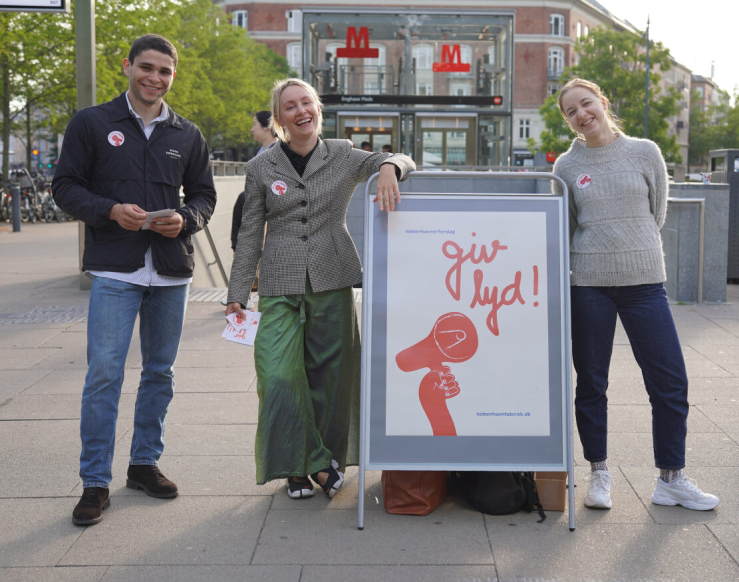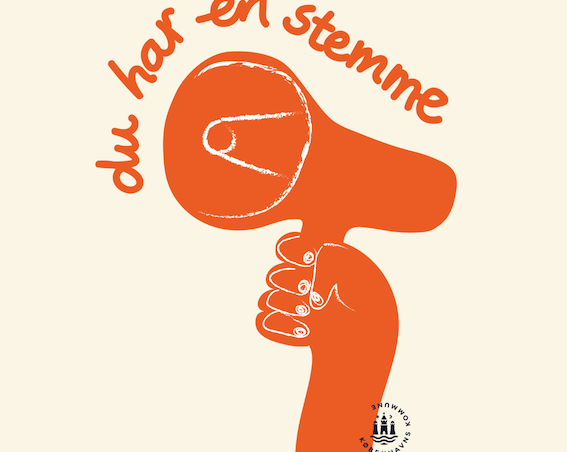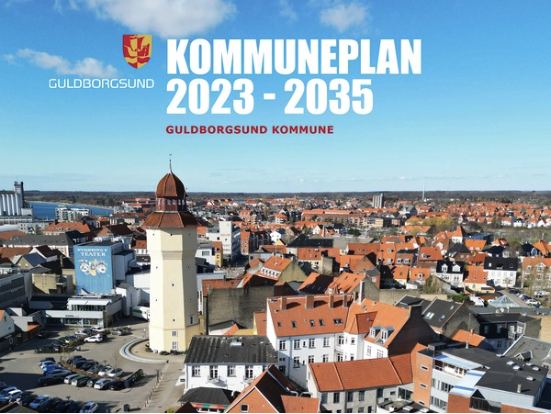In August 2023, the City of Copenhagen took a bold step forward on their participatory democracy journey with a new community engagement initiative: encouraging residents to submit proposals for city improvement projects.
With clear directions and encouragement for residents to work together to propose initiatives, the city launched with the goal of reaching 20,000 residents in the first year and a half of the project. In the four months since their launch, they have gained 12,000 platform registrants – so how far have they come in their goal to amplify the voices of Copenhagen’s residents? We sat down with Aja Faurschou Enghoff, Project Manager for the City of Copenhagen, to get an update.
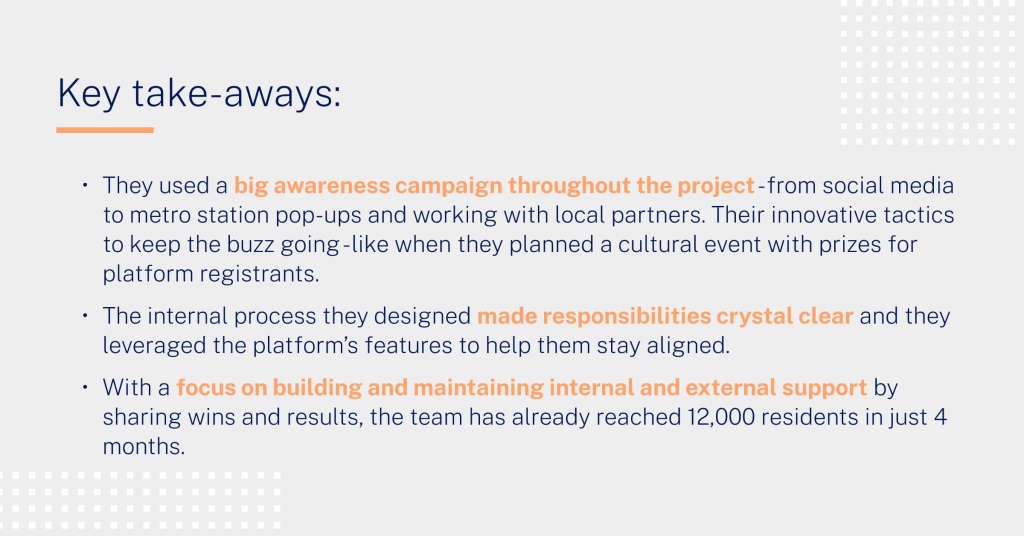
Deciding to use a digital community engagement platform
In very practical terms, the City of Copenhagen’s team needed a digital platform that could support a proposals-driven project and which multiple administrations could use.
Aja: We knew a plug-and-play solution would work best for us, and CitizenLab really stood out in that regard. Copenhagen has a strong orientation towards community engagement, and in 2024 we plan to have all 7 of our city administrations using the platform. Because each administration runs projects on different topics and wants to access different engagement methods, we wanted to launch our proposals initiative on a platform that would enable us to test and assess the potential of a common engagement platform for the whole municipality.
Preparing for successful engagement coordination
With such a big undertaking, the city’s team wanted to put measures in place to collaborate effectively across departments and with residents, so they put a plan in place.
Aja: It can be challenging for Copenhageners and staff alike to know every community engagement initiative going on in the different administrations. So with a common digital platform in 2024 we want to evaluate the benefits of having a central place to engage with us. One of the biggest steps we took to coordinate this more cohesive effort actually dates back to 2018 when we developed and agreed to common Principles and Guidelines for Citizen Engagement – that’s the backbone of our current initiatives.
In terms of our internal organisation, the other administrations and departments have been on-boarded at leadership meetings and continuously through our steering committees.
Utilising bottom-up engagement methods
Copenhagen has years of experience with community engagement. Even so, launching their digital engagement platform with Proposals was a big move – one that required political ambition and conviction of the value of bottom-up approaches.
Aja: We wanted to use a bottom-up approach to engage people differently in the hopes that this engagement method would inspire more direct democracy. As we see it, proposals can help engage more people and this helps us reach a broader spectrum of ideas and perspectives as we develop the future of Copenhagen.
Communications plans to promote community engagement
However strong or compelling a project may be, it’s important to build in time and resources to promote it so that the community is aware of how they can engage.
Aja: When we first launched, we prepared a social media campaign, put up unique imagery on digital signage across local streets, hosted a launch event at a metro station where we also handed out informational flyers, posted the launch on our intranet for everyone working at the municipality to be aware of the project, and also garnered press in local and national newspapers and digital media.
Aside from those more traditional communications tactics, we also informed the networks and partners with which we work closely, including associations made up of civil society groups that have built trust and relationships across Copenhagen’s diverse communities. We made sure to spread our communications budget beyond just the launch, which has enabled us to host pop-ups – including at metro stations with swag bags and information. We recently did a pop-up for the holidays, targeting families with small children because we’d like to see that target audience more active and know that they have more barriers to participation.
Promoting continuous community engagement and reaching more people
A launch strategy is one thing, but promoting continuous community engagement takes a team effort and an intentional plan that adjusts to your learnings along the way.
Aja: After our launch, we had a Fishing Pond “Københavnerdammen” at the culture night in the Town Hall, as well as our Open Town Hall “Åbent Rådhus” (one of our pilot projects) in November. Fishing ponds are quite popular in our culture, so we had a version that attendees could play if they registered on the platform or voted for an active proposal.
It’s been a few months since we launched, and next, we plan on doing a pecha kucha (a storytelling-based presentation) in March with various associations to discuss their ideas (within the framework of our proposals criteria). People will be able to vote both digitally and analog at the event.
Around early Spring, we’re planning to set up an idea box in some libraries and cultural buildings so that people can anonymously share their ideas, either in analog form or digitally. Our team will collect the analog ideas and put them up on the digital platform – these will not be proposals themselves, but rather make up an idea bank for others to consider as they develop their proposals. We hope this will be a way to mobilise more people and help us account for community members who may not want to participate publicly via proposals. After all, we’re all about training people’s democratic muscles in whatever way is most comfortable for them!
Moderation for safe and productive community engagement
Preparing for how to handle unproductive or even hateful input can help set engagement teams up for more success, all while practicing transparency with their community.
Aja: Whether a proposal is controversial or problematic can be subjective, so we created clear, structured criteria for all of our proposals and they are public so that anyone submitting a proposal knows what is expected of them. If the criteria are not met, the proposal is rejected. Having these criteria has helped – the quality of all of the proposals submitted so far has been good.
Having criteria for people to follow has helped them develop robust proposals, and requiring that at least three co-sponsors – so four people total – are part of a proposal adds an extra level of ownership, so we see people really taking the process seriously. For example, many co-sponsors will share the link to their proposal with their personal networks via social media to encourage people to vote for it – this means we’re seeing higher numbers of engagement across the community’s ideas, which is what we wanted.
An engagement platform built to power bottom-up proposals
Copenhagen’s team really thought through the guidelines to set their proposals project up for success, but that also means they’re getting a high level of engagement. CitizenLab’s engagement platform has features to help enable city staff to follow up on proposals without overwhelming them.
Aja: It helps a lot that our team can write official statements and updates directly and transparently on the submitted Proposals, and it helps that those responses are visible to all platform participants. This saves time that would have been spent responding to emails asking for updates. The platform helps us reach more transparency and hopefully, this will build more trust and insight into how the municipality works.
Our organisational set-up is such that we have a project manager – myself – who acts as the central coordinating link between the different administrations. And then we have a steering committee with one member from each of the 7 administrations. Once a proposal has received 3 co-submitters, the proposal is screened for a number of criteria by the project manager, after which it is forwarded to the relevant steering committee member (who works in the administration the proposal concerns), who will then ensure that it is screened for additional criteria in the administration’s specialist offices. It is then sent back to the project manager with written feedback from the administration, which the project manager reviews and publishes together with the proposal.
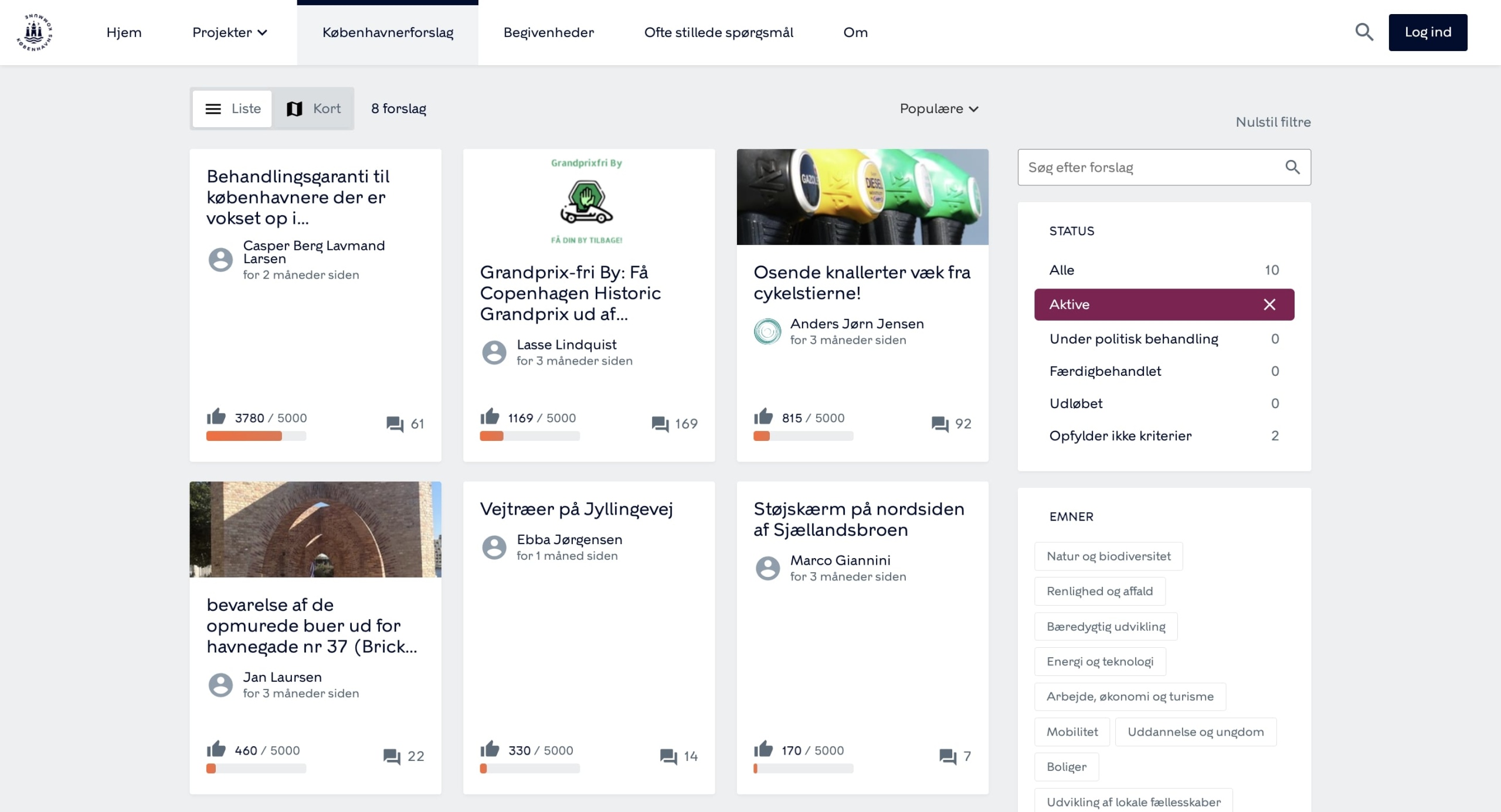
Example of a proposal on the City of Copenhagen’s engagement platform. The text was originally in Danish and this depiction is machine-translated.
We have given ourselves 10 business days to do this screening, but it often requires less. If a proposal receives 5,000 votes, it will be registered as an official case that will be forwarded to the relevant administration, which will then prepare the proposal for the specialist committees’ consideration. They have three months to do so. At the technical committee meeting, the politicians will make a recommendation to the City Council, which will make a final decision on the matter at the City Council’s earliest possible meeting.
Garnering engagement support from city leaders and the community
Copenhagen has a strong culture of engagement, which requires continuous nurturing to maintain active support from city leadership and the community.
Aja: For us, the primary success criterion is not necessarily that more proposals will be implemented but that the proposals have a better chance of getting enough votes and getting seriously treated and considered by our politicians. This is why we decided to implement three co-sponsors as a qualifying barrier as well as the initial screening for criteria. Moreover, we decided on a model where we present the proposals that get at least 5,000 votes to the administration that would oversee that project before they are processed by the City Council. This helps ensure that by the time proposals reach the decision-making stage, politicians are well-informed about the opportunities and implications, enabling them to make more informed decisions.
We have broad political support for the initiative itself among our different political parties, but getting political buy-in on the proposals themselves is another thing. I find it really important to constantly remind the leadership of what they started and show them the results so they can see progress. That keeps us invested in the long run. On the community side, we have a lot of people already engaged, which signals to us that it’s going well and there is a lot of interest.
Measuring engagement results
Despite the project still being in its early days, the team’s intentional approach already seems to be working in their favour. It’s only been about 4 months since they launched and they already have several exciting updates to share.
Aja: We’re excited that more than 12,000 people have already registered on the platform in these few months. Our goal is to reach at least 20,000 people in the first year and a half of this project.
Before we launched, we analysed other similar initiatives from municipalities across the country. We noticed a pattern of a high number of individual proposals with low numbers of votes per proposal – we wanted to ensure that there was more community engagement across peers’ proposals, and that it felt like a collective effort. That’s why we put in place criteria such as having three co-submitters and requiring a certain number of votes before a proposal can move on for official consideration. We’re aiming for qualified proposals and more votes per proposal, and so far, the proposals are getting quite a lot of votes.
We hope that this trend will continue and that we’ll see a spillover effect as more administrations join the platform and host projects – with community members then participating across administrations and projects on the platform. We want to build an ecosystem of engagement across our municipality’s engagement efforts, and think the platform can help us do that.
Peer advice for local governments considering bottom-up engagement
Local governments considering bottom-up engagement methods may have specific concerns or questions that a peer can answer best. Drawing from their own experience, the City of Copenhagen’s team has plenty of advice to share.
Aja: Bottom-up engagement is very important, and we should use all the tools that we can to promote it. There is a worldwide crisis in democracy across our cities and governments. People are increasingly losing trust in democratic institutions, and we need to find solutions to that. We hope that proposals can be one of many solutions to that crisis, and that they can help us engage more people in local democracy. The bottom-up method should be one of many different engagement methods to implement in our work.
A platform built to power any level of engagement
Whether you’re ready to embrace the power of Proposals to fuel your bottom-up engagement efforts, or if you’re more eager to try a different engagement method first – CitizenLab’s engagement platform can help you on your engagement journey. Schedule a chat with one of our experts and discover how our participation platform can take your projects to the next level!
